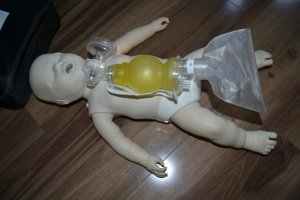
Poisoning in children is serious and emergency medical services must be called immediately. About half of all cases of poisoning occur in children, especially young children below six years of age. As infants begin to age, they become more aware of their environment. Their curiosity increases as they are able to explore their environment more and pick up things to touch and sometimes, taste these things. It is common for children to put things inside their mouth, mistaking them for candies or even a type of drink.
Most cases of poisonings in children are accidental. Every poisoning emergency must be given first aid immediately to avoid complications. However, the local poison control center should also be contacted for further instructions. Always know the important emergency numbers in the local city. Disclaimer: This article should not be used for medical advice or treatment and management of poisoning in children. This is for information purposes only. Take Standard Childcare First Aid Courses to be familiarized with potential dangers. Furthermore, enrolling in CPR courses can be advantageous in cases where there is no breathing or pulse detected in emergency situations.
Ways to Get Poisoned:
There are several ways getting poison in the body.
- Ingestion: eating and swallowing dangerous chemicals that are usually found in the house
- Absorption: skin absorption from various chemicals and plants found in the garden
- Injection: poison from animal/ insect bites and stings
- Inhalation: breathing in smokes or fumes in the airs that enter the lungs
Most Common Poisons for Children
The most common and dangerous poisons for children include:
- Medications (most common) – too much or wrong medication
- Cleaning products
- Pesticides
- Nail polish
- Iron pills
- Hydrocarbons
- Wild mushrooms
- Alcohol
Signs and Symptoms of Poisoning in Children
Children may not be able to articulate what they are feeling, including when they have been poisoned. The following are common symptoms of poisoning in children:
- Finding an open/ empty medicine bottle or container
- Redness or burns around the mouth and lips
- Burns, smells or stains on the child’s clothes
- Unusual odour upon exhalation or smells like chemicals
- Abdominal pain
- Vomiting
- Drooling
- Sleepiness
- No energy
- Difficulty breathing
- Confusion and other strange behaviour
- Seizure
First Aid Management for Poisoning in Children
To give first aid to a child who is a victim of poisoning, the following steps are recommended:
- If the child was exposed to poisonous fumes, get the child into fresh air and encourage slow, deep breaths.
- If the child swallowed poison, remove any object that may be in the mouth but do not induce vomiting as this may actually cause more damage. Only induce vomiting if advised by poison control center.
- If the child’s skin was exposed to poison, flush the affected area with lukewarm or cool water for 20 minutes or until the paramedics arrive. Remove any clothing that may still contain the poison.
- Check and monitor for vital signs. Initiate CPR as necessary.
- Do not leave victims of poisoning in children at all times and do not give anything by mouth.
